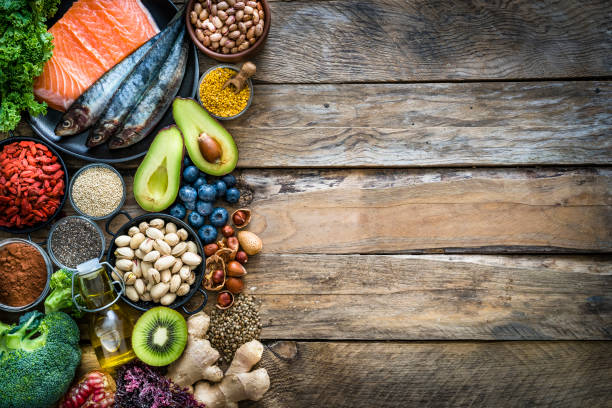Gluten free but still have a bloated stomach?

By Christine Lewis
Top Four Lactose Intolerance Symptoms
The top four symptoms of lactose Intolerance that appear after lactose (dairy, especially milk) consumption include:
- Abdominal pain
- Gas and bloating
- Diarrhoea
- Abdominal cramping
Additionally, the following symptoms are seen less frequently:
- Gurgling noises
- Nausea
- Vomiting
What is Lactose Intolerance?
Lactose intolerance is one of the most common forms of food intolerance. Symptoms of lactose intolerance are caused by an inability to produce enough enzymes called lactase. The lactase enzyme is found in the small intestine and allows digestion of lactose, a sugar found in dairy products. Most people are born with the ability to digest lactose until weaning; then, for some, the supply of lactase reduces to a point where symptoms appear with the consumption of dairy, particularly milk. According to the Lancet (2), the estimated prevalence of lactose intolerance is estimated to be 28% of the European population, whereas the global prevalence is estimated to be more than 55%.
The absence of the enzyme lactase causes gas to form from the fermentation of undigested sugars found in lactose, creating bloating and diarrhoea. Symptoms intensify with the level of lactose consumed (3) and vary considerably by each individual.
Lactose intolerance is not harmful but uncomfortable to live with. However, a milk allergy is more serious and shares some symptoms with lactose intolerance, and tends to affect more younger children. It is important to get symptoms checked out with your GP to understand if your child has an intolerance or allergy.
Lactose intolerance can also happen later in life caused by damage to the small intestine, which is discussed below.
Main Types of Lactose Intolerance
Primary lactose Intolerance often occurs during childhood from a natural reduction in the supply of lactase enzymes in the small intestine after weaning. Primary lactose intolerance can affect anyone, but it has a genetic tendency which causes differing geographical prevalences (1).
Secondary lactose intolerance is caused by small intestinal disease or injury (1)affecting the previous normal supply of lactase enzymes. Once the cause is identified and treated in secondary lactose intolerance, enzyme production and lactose absorption are often seen to return to normal. The typical causes of secondary lactose intolerance are:
- IBS
- Coeliac disease
- Inflammatory bowel disease
- Gastroenteritis and other gut infections from bacteria and virus
- Dysbiosis – an overgrowth of certain gut bacteria such as:
- SIBO Small Intestinal Bacterial Overgrowth
IBS and Lactose Intolerance
The risk of symptoms and the severity of lactose intolerance symptoms are significantly increased in IBS patients, estimated at almost 49%, especially at low to moderate levels of lactose found in the average diet (4).
Coeliac disease and Lactose Intolerance
Patients with a new diagnosis of coeliac disease often have lactose intolerance. However, a study found that many recover the ability to digest lactose after 12 months on a gluten-free diet (5).
Crohn’s disease and Lactose Intolerance
The symptoms of Crohn’s disease are similar to lactose intolerance. However, it is possible to be diagnosed with Crohn’s disease and also be lactose intolerant (6). Crohn’s disease affects both the small intestine and the colon. It is believed that damage to the small intestine can lead to reduced production of lactase enzymes. A study (6) showed an 83% frequency of lactose intolerance in active Crohn’s disease.
Gastroenteritis and Lactose Intolerance

Many cases of gastrointestinal infections from bacteria and viruses have been shown to cause lactose intolerance, often termed Post-infectious lactose intolerance. Rotavirus enteritis in children was seen to trigger transitory lactose intolerance in 60% of cases (7), the duration of the intolerance was shown to be relative to the intensity of the infection. Some of the main offending bacterial infections leading to lactose intolerance include Rotavirus, Giardia intestinalis, Cryptosporidium and Cyclospora.
Additionally, a recent study of IBS patients with Helicobactor pylori (H pylori) infection had 20% more associated lactose intolerance where abdominal pain was more acute than those with just IBS and H pylori or lactose intolerance (14).
SIBO and Lactose Intolerance
SIBO Small Intestinal Bacterial Overgrowth is a condition in which the small intestine is excessively populated by certain bacteria. Disturbances to the gut lining and motility changes can cause bacteria to multiply, causing SIBO symptoms of diarrhoea, bloating, flatulence, and abdominal discomfort. A recent Hungarian study showed that 60% of their lactose intolerant group also had diagnosed SIBO, which after treatment, resolved the lactose malabsorption (8).
Which foods contain lactose?
The following list shows the level of lactose per 100g and by typical serving.
| Food | Lactose content (g) per 100 g | Lactose content per typical serving (g) |
| Milk (full) | 4.7 | 15 |
| Milk (skimmed) | 4.8 | 15 |
| Lactose-free milk | <0.1 | <0.1 |
| Goat’s milk | 4.5 | 13 |
| Buttermilk | 3.0 | 9.0 |
| Butter | 0.5 | 0.1 |
| Yoghurt (fresh) | 3.0 | 9.3 |
| Yoghurt (biological) | 4.0 | 9.5 |
| Cream cheese | 3.0 | 0.9 |
| Soft cheese (eg, camembert) | 0.3 | 0.1 |
| Hard cheese (eg, cheddar and gruyere) | 0.1 | <0.1 |
| Cream | 3.6 | 3.2 |
| Soft ice cream | 6.4 | 5.7 |
| Latte Macchiato | 4.3 | 8.6 |
Other foods that may include lactose are those prepared with milk or milk products such as some processed meat sausage, breaded or battered meat or fish, commercial egg substitutes, scrambled eggs and souffles.
Lactose is also a common additive in many processed foods, such as frozen meals, sweets, cakes, and sauces. This “hidden lactose” is used for its texture and flavour-enhancing properties.
Naturally lactose-free foods such as soy products (tofu, edamame) and plant-based drinks (soy, almond and rice milk) are good alternatives to high-lactose foods. The food industry has also developed many new lactose-free products using processes that remove lactose from lactose-rich dairy foods.
The use of “A2 milk” has been shown to reduce some of the gastrointestinal discomfort associated with drinking ordinary cow’s milk in individuals with lactose intolerance. “A2 milk” is a variety of cow’s milk containing mostly A2 beta-casein (like human milk, sheep and goat’s milk) that does not metabolise to the peptide beta-casomorphin-7 (BMC-7), which is implicated in adverse gastrointestinal effects, including inflammation (9). Interestingly, the gastrointestinal symptoms resulting from the ingestion of cow’s milk in lactose-intolerant individuals are decreased when milk enriched in A2 beta-casein is consumed in place of regular milk (which contains A1 beta-casein).
Some lactose-intolerant individuals can tolerate up to 5 grams of lactose per single meal and manage well with aged hard cheeses (10).
The nutrient profile of cow’s milk

The nutritional composition of cow’s milk with 3.25% fat as the % of Daily Value (DV) per 100 g and per 244 g serving (11).
| per 100 g | % of DV per 244 g Cup | ||
| Macronutrients | |||
| Energy | kcal | 61 | |
| Protein | g | 3.2 | 15% |
| Total lipid (fat) | g | 3.3 | 12% |
| Carbohydrate | g | 4.8 | 4% |
| Choline | mg | 34.9 | 15% 1 |
| Minerals | |||
| Calcium, Ca | mg | 113 | 28% |
| Iron, Fe | mg | 0.03 | 0% |
| Magnesium, Mg | mg | 10 | 6% |
| Phosphorus, P | mg | 84 | 20% |
| Potassium, K | mg | 132 | 7% |
| Sodium, Na | mg | 43 | 13% |
| Zinc, Zn | mg | 0.37 | 6% |
| Vitamins | |||
| Vitamin C | mg | 0 | 0% |
| Thiamin | mg | 0.046 | 7% |
How to make up for lost calcium

Calcium is one of the main minerals found in milk and is important to bone development. Taking calcium from vegetable sources is beneficial as they provide the added benefit of containing magnesium, a mineral that helps the body absorb calcium.
The recommended daily allowance of calcium for adults between 19 and 64 years of age is 700mg (13). Try to build at least six portions of the following foods daily, including fortified milk alternatives and good quality bread with added calcium. If you can include sardines regularly into your diet, you will get a large portion of your daily requirement at 382mg of calcium for every 100mg of sardines.
Foods providing around 50mg of calcium per average portion
- Green or French beans – 1 serving (90g)
- Green cabbage – 1 serving (95g)
- Raw, white cabbage – 1 serving (90g)
- Steamed broccoli – 1 large portion (110g)
- Watercress – 1 small bag (40g)
- Fried onion – 1 medium-sized (150g)
- Tinned tomatoes – 1 tin (400g)
- Red kidney beans – 2 tbsp (70g)
- Vegetable casserole – 1 serving (260g)
- Veggie burger – 1 (56g)
- Boiled basmati rice – 2 portions (1 portion = 5 heaped tbsp)
- Dried apricots 8 (64g)
- Orange – 1 large orange (50g)
- Easy peel citrus, e.g. tangerines/satsumas – 3 easy peelers (210g)
- Almonds 10 – whole nuts (22g)
- Brazil nuts – 9 whole nuts (30g)
What else may help ease symptoms of Lactose Intolerance?
Many studies have shown that specific probiotic strains can reduce lactose intolerance symptoms. A systematic review (12) evidenced decreases in abdominal cramping, diarrhoea, bloating and gas from the following clinically trialled probiotic studies:
- L. acidophilus
- L. reuteri
- L. rhamnosus
- L. bulgaricus
- S. thermophilus
- B. longum

It is important to have your doctor check your symptoms to rule out other conditions with similar symptoms to lactose intolerance, such as coeliac disease or milk allergy, particularly for children. Your GP may consider a hydrogen breath test or lactose tolerance test or monitor the progress of a lactose exclusion diet.
This information is not designed to replace the advice from your doctor.
References:
(1) Misselwitz, B. et al. (2019) Update on lactose malabsorption and intolerance: pathogenesis, diagnosis and clinical management. Gut.
(2) Storhaug, C. Fosse, S. Fadnes, L. (2017) Country, regional and global estimates for lactose malabsorption in adults: a systematic review and meta-analysis. The Lancet
(3) (2018) Microbiota stability in healthy individuals after single-dose lactulose challenge—A randomised controlled study
(4) Fassio, F. et.al (2018) Lactose Maldigestion, Malabsorption, and Intolerance: A Comprehensive Review with a Focus on Current Management and Future Perspectives. Nutrients.
(5) Ojetti. V. et. al (2008) Regression of lactose malabsorption in coeliac patients after receiving a gluten free diet.
(6) Tirpitz, C. et al. (2002) Lactose intolerance in active Crohn’s disease: clinical value of duodenal lactase analysis J Clin Gastroenterol
(7) Hu, Y. et al. (2016) The incidence of infants with rotavirus enteritis combined with lactose intolerance
(8) Varju, P. (2020) The role of small intestinal bacterial overgrowth and false-positive diagnosis of lactose intolerance in southwest Hungary—A retrospective observational study
(9) Jianqi, S. et al. (2016) Effects of milk containing only A2 beta casein versus milk containing both A1 and A2 beta casein proteins on gastrointestinal physiology, symptoms of discomfort, and cognitive behaviour of people with self-reported intolerance to traditional cows’ milk
(10) Shaukat, A. (2010) Systematic review: Effective management strategies for lactose intolerance
(11) USDA Food Composition Databases. Available online: https://ndb.nal.usda.gov/ndb/search/list?home=true
(12) Lesi, R. et al. (2020) Effects of Prebiotic and Probiotic Supplementation on Lactase Deficiency and Lactose Intolerance: A Systematic Review of Controlled Trial
(13) https://www.nhs.uk/conditions/vitamins-and-minerals/calcium/
(14) Schnedl, W. (2022) Helicobacter pylori infection and lactose intolerance increase expiratory hydrogen
Thank you
Thank you for reading this article. If you found the content of this article useful, you might also enjoy reading “6 Signs That You Might Be Gluten Intolerant“.


























